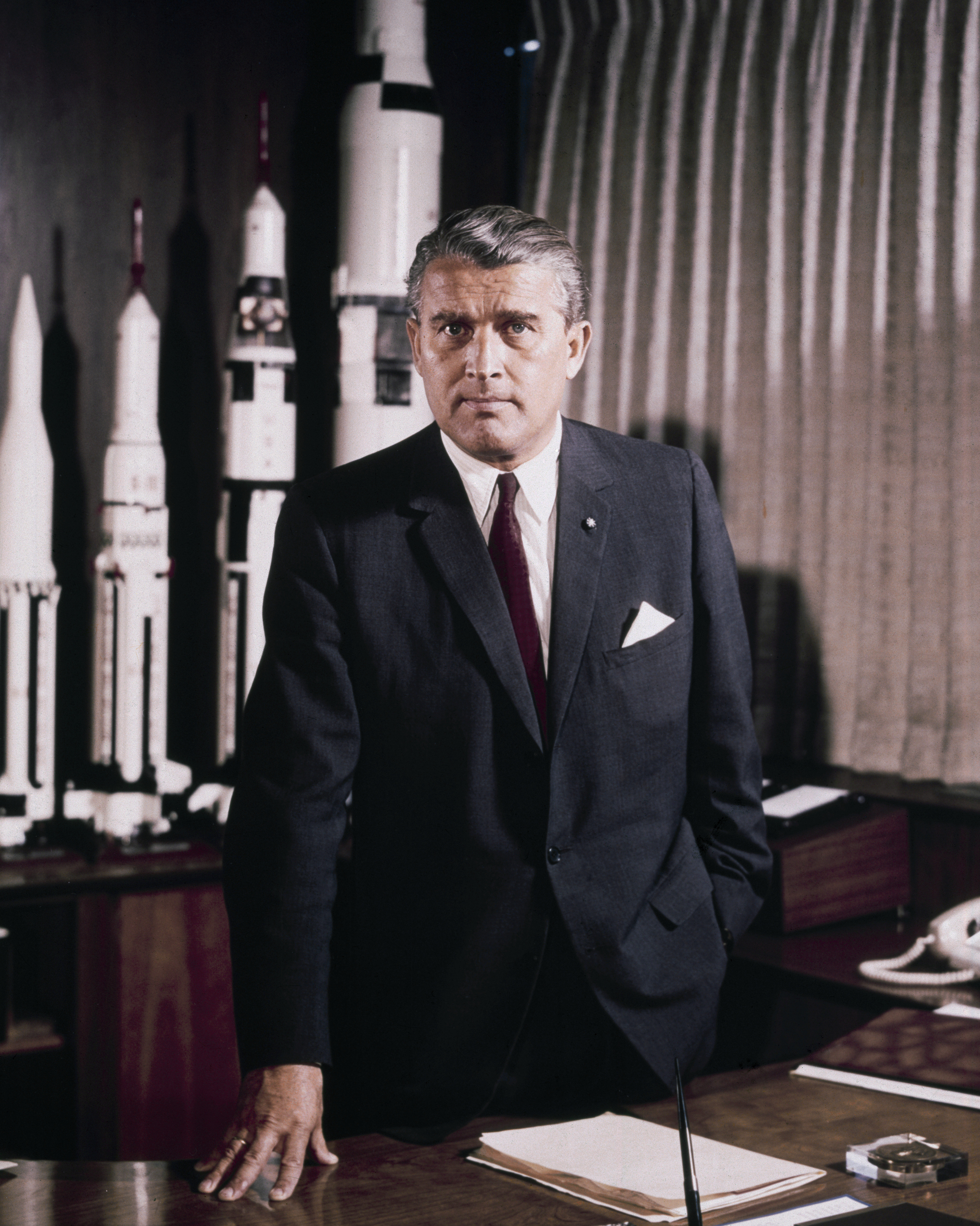Wernher von Braun
 Wernher Magnus Maximilian Freiherr von Braun ( ; ; 23 March 191216 June 1977) was a German-American aerospace engineer and space architect. He was a member of the Nazi Party and later the ''Allgemeine SS'' which supported his rocket work. He became the leading figure in the development of rocket technology in Nazi Germany, and later a pioneer of rocket and space technology in the US.
Wernher Magnus Maximilian Freiherr von Braun ( ; ; 23 March 191216 June 1977) was a German-American aerospace engineer and space architect. He was a member of the Nazi Party and later the ''Allgemeine SS'' which supported his rocket work. He became the leading figure in the development of rocket technology in Nazi Germany, and later a pioneer of rocket and space technology in the US.As a young man, von Braun worked in Nazi Germany's rocket development program. He helped design and co-developed the V-2 rocket at Peenemünde Army Research Center during World War II. The V-2 became the first object to travel rapidly from ground level to the higher atmosphere on 20 June 1944.
Following the war, he was moved to the United States, along with about 1,600 other German scientists, engineers, and technicians, as part of Operation Paperclip. He worked for the United States Army on an intermediate-range ballistic missile program, and he developed the rockets that launched the United States' first space satellite Explorer 1 in 1958. He worked with Walt Disney on a series of films, which popularized the idea of human space travel in the US and beyond from 1955 to 1957.
In 1960, his group was assimilated into NASA, where he served as director of the newly formed Marshall Space Flight Center and as the chief architect of the Saturn V super heavy-lift launch vehicle that propelled the Apollo spacecraft to the Moon. In 1967, von Braun was inducted into the National Academy of Engineering, and in 1975, he received the National Medal of Science.
Von Braun is seen by some as escaping justice for his awareness of Nazi war crimes due to the Americans' desire to beat the Soviets in the Cold War. He is also sometimes described by others as the "father of space travel", the "father of rocket science", or the "father of the American lunar program". Towards the end of his career, he also advocated a human mission to Mars. Provided by Wikipedia
1
